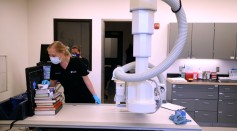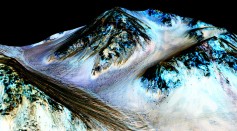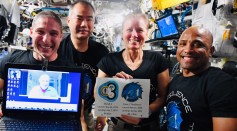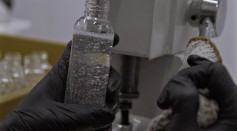Mark Bustos

New Study Unveils Hereditary Clues to the Capuchin’s Long Life and Large Brains

Brain-Swelling Nipah Virus The Next Pandemic? Scientists Warn Its 75 Times Deadlier Than COVID-19
Bacteria-Synthesized Magnetic Nanoparticles Could Soon Find Biomedical Applications

New Study Takes Us Closer to Holograms on Food

Researchers Fabricate Novel X-Ray Photodetectors by Embedding Perovskites on Graphene

Italy's Mount Etna Spews Ash and Smoke in New Eruption

NATO Multimedia's Science Series Looks at High-Altitude Balloons
Vibrating 2-D Materials Could Revolutionize Electronics

Terrains on Mars Might Be Far Older Than Previously Thought

Living Near Artificial Night Lights Increases Risks of Thyroid Cancer

The SpaceX Crew Dragon Spaceship Sets a New Record for Most Days in Space

23-Year Data Reveals How High-Latitude Lakes Respond To Climate Change

New Optical Coatings Reflect and Transmit Colors of Impressive Purity

Researchers Report a Mysterious Organic Material That Catalyzes and Reduces Chemical Waste
Most Popular

How Technology Is Changing the Real Estate Industry?

Study Reveals High Turnover in Scientific Research Careers: What This Means for Future Scientists

Nikolay Karpenko Biography, Photo, Career, Accomplishments

China’s Tiangong Space Station to Expand Its Capabilities With New Modules






